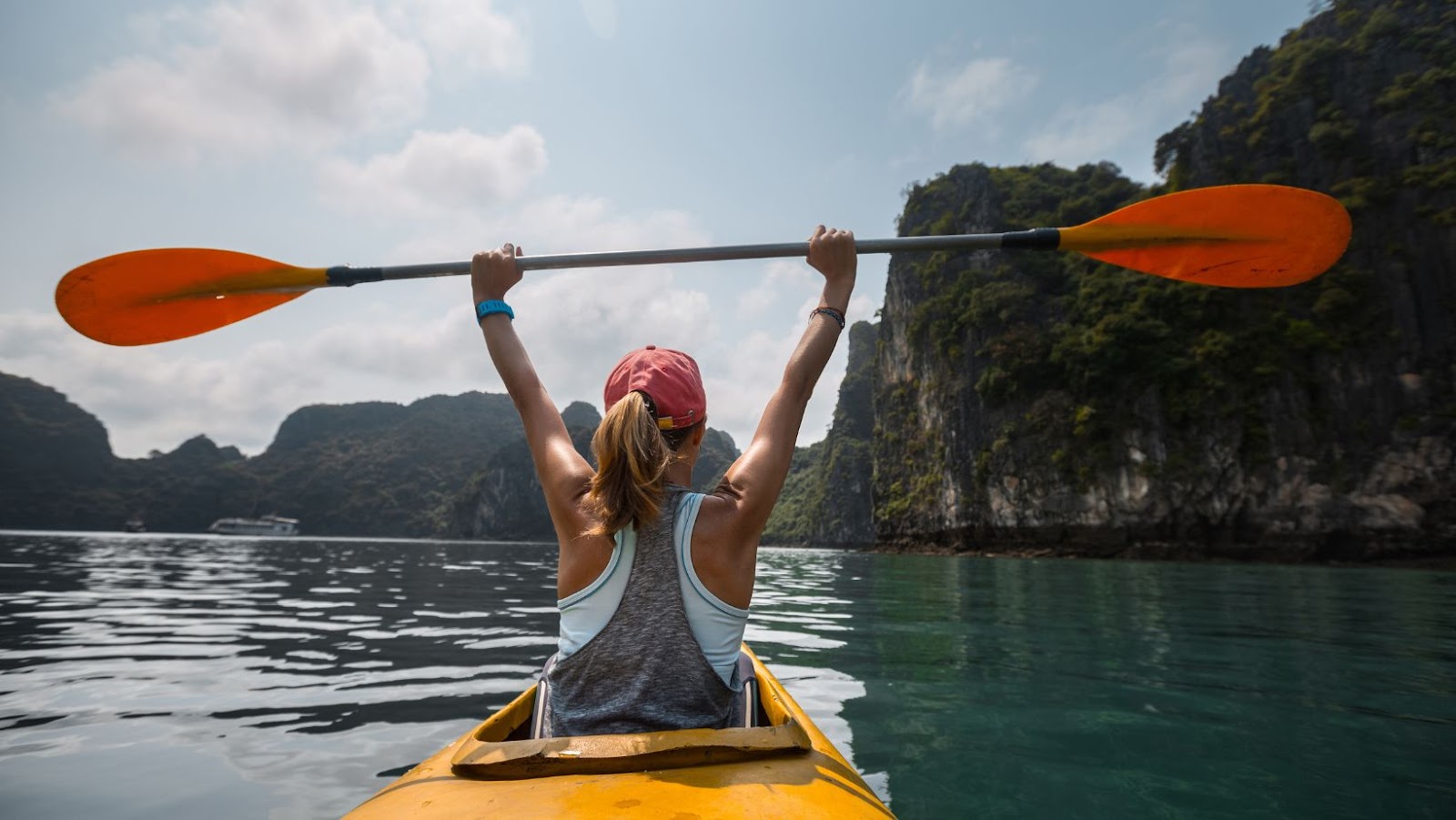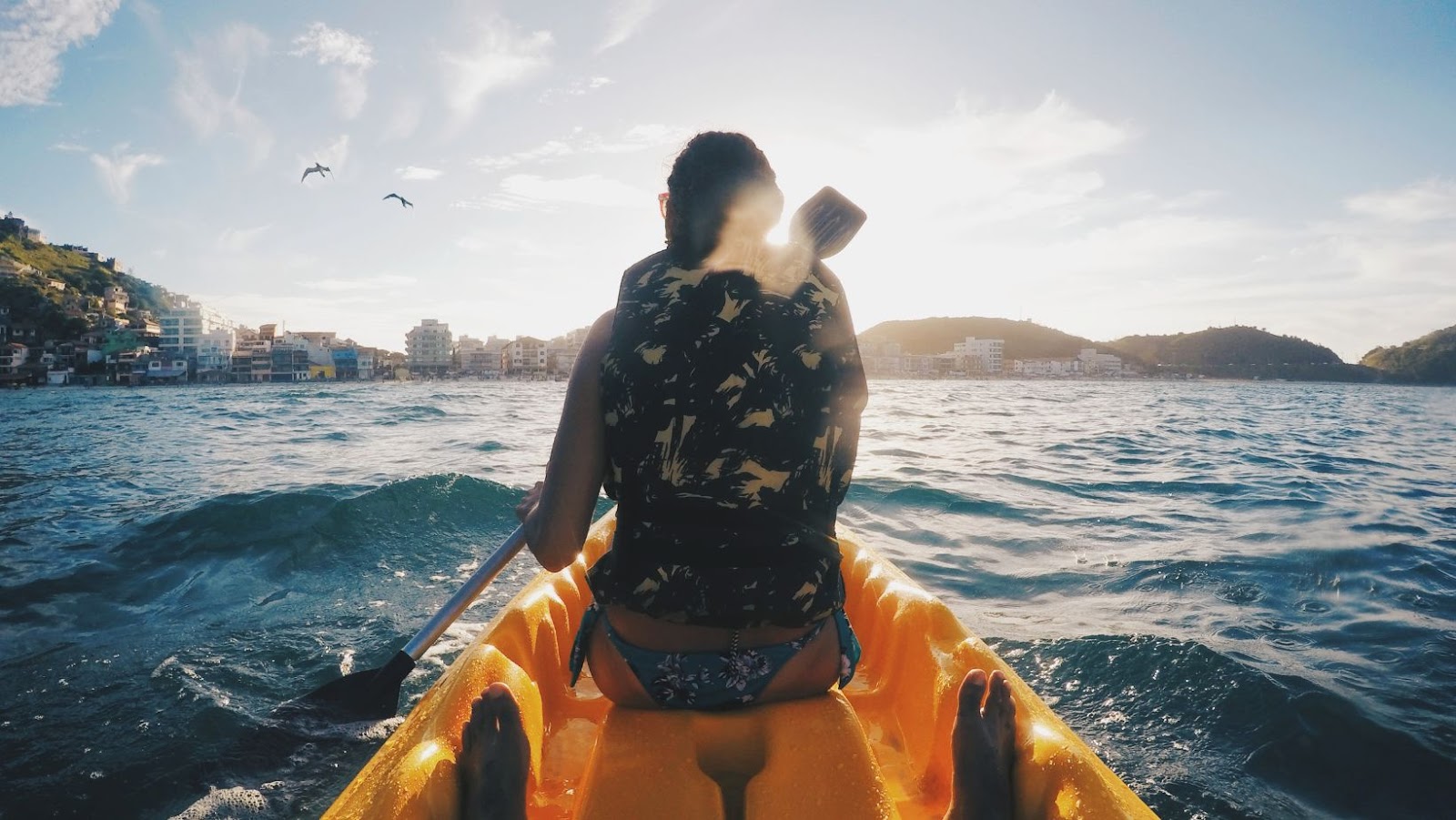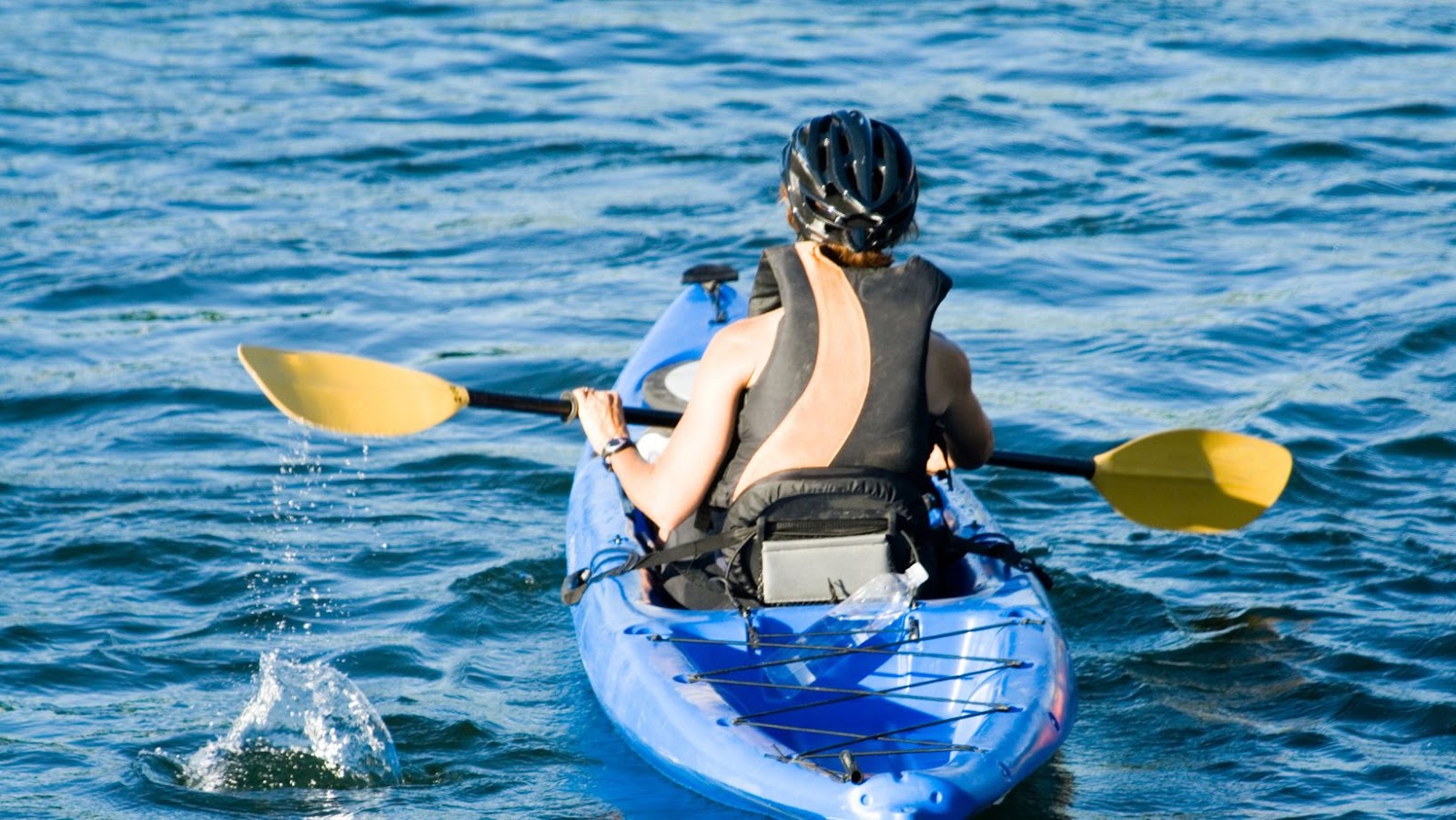Are you considering taking up Kayaking but wondering if it’s safe? Worry no more; this article covers all the safety precautions necessary when kayaking. You’ll be equipped with the right knowledge to enjoy a safe yet exhilarating kayaking experience.
Introduction to Kayaking
Kayaking is a great way to enjoy the outdoors and explore bodies of water. It’s a great form of exercise, as well as being a fun recreational activity for any age group. Knowing the basics of kayaking safety can help make sure that your time on the water runs smoothly and safely.
The most important piece of gear for kayaking is a personal flotation device (PFD). A PFD is the most important piece of kayak safety equipment and should always be worn when out on the water. It’s also important to dress appropriately with comfortable clothing that won’t hinder your movements, shoes that will keep your feet secure in your kayak, and sunscreen or hat if you will be paddling during sunny weather. Keeping yourself hydrated while out on the water is also essential. An electrolyte-rich sports drink is usually best for maintaining energy levels while paddling. Knowing where you’re going and what obstacles might be in your way before setting out can help ensure you don’t get into trouble while on the water. If possible, attempt to paddle in groups rather than alone, as there are more people available to help should an accident occur. Knowing local regulations such as correct signaling devices or boat speed limits is also key — get familiar with local regulations before hitting the water! Finally, always have backup communication tools such as cell phones or whistles available with plenty of battery life before heading out onto the lake or river.
Is Kayaking Safe
Before embarking on a kayaking adventure, it is important to understand the potential risks associated with the activity. Safety guidelines should be followed at all times to minimize the risk of injury or death while engaging in this activity. Kayaking can present a variety of unique hazards that need to be taken into consideration before engaging in any water sports. Depending on your skill level, the environment in which you’re paddling and the type of kayak used, there are various dangers that should be understood before embarking on your journey. Common risks associated with kayaking include hypothermia from cold water immersion, drowning from capsizing or falling out of an unstable boat, collision with rocks and other objects in fast moving water and even dehydration due to exhaustion and heat stroke. It is important to understand how these risks can be minimized when engaging in kayaking activities. Paddling in calmer waters with adequate supervision is recommended for less experienced kayakers and cold water immersion can typically be avoided by wearing appropriate dressing for the conditions such as a wetsuit or drysuit based upon location. Additionally, controlling speed while maneuvering around rocks and other items while downstream kayaking is essential to keeping safe and preventing collision with dangerous objects. Hypothermia is another serious concern while canoeing or whitewater rafting so it’s important to wear layers of clothing that can help provide insulation whenever needed such as wool or fleece material garments – particularly during colder temperatures & seasons. Furthermore, kayakers should always pay attention to weather forecasts prior to their trips so they can gauge water levels beforehand which will allow them to plan accordingly for potentially strong currents & hazardous conditions – especially if an individual doesn’t have much experience under their belt yet! Lastly, it is important for each paddler to assess their own abilities beforehand so they know how long they plan on staying out in the waters & bring along vital gear items (i.e first aid kit). Good preparation & understanding all possible risk factors plays an integral role in making sure any day spent out on a lake/river involving some sort of paddling sport stays safe & enjoyable!
Essential Kayaking Safety Tips
Kayaking is a popular way of enjoying nature and getting exercise, but it can also be hazardous if you don’t take proper precautions. Before you head out onto the water, make sure you have all the necessary gear and knowledge to ensure your safety on the water. Here are some essential kayaking safety tips:
1. Wear a Personal Flotation Device (PFD): A PFD is essential for your safety while kayaking. It should be US Coast Guard-approved, comfortable enough to wear for long periods of time without feeling constricted, and designed to fit your specific body type. The PFD should always be worn when kayaking.
2. Dress Appropriately: Clothing should be lightweight, breathable, non-absorbent, and suited to whatever climate you are in. Avoid wearing anything that could create an entanglement risk such as cords or straps designed as jewelry or loose clothing that could get caught in paddles or other equipment while out on the water. Wearing bright colors can also help make it easier for others to spot you from afar.
3. Be Aware of Weather Conditions: Check weather forecasts before venturing out on the water and observe sea conditions along the way for signs of upcoming weather changes such as changes in wind speed or direction or changes in wave size and shape that could affect stability and buoyancy of your kayak. Never head out into inclement weather conditions such as heavy rain or strong winds regardless of previous experience level—if in doubt stay on land!
4. Understand Your Kayak: Knowing your boat—how it handles different speeds, turns, different cargo loads—is one key part of staying safe while kayaking at any level; undertake some basic research beforehand and educate yourself regarding how best to maneuver your craft depending on load-out or changing conditions like wind speed/direction or wave heights caused by passing vessels etc.
5. Know The Limits Of Your Abilities: Before undertaking a new route or challenge with a kayak, assess realistically what kind of physical and technical ability you possess before attempting it; never take risks beyond their current experience level and where possible seek assistance from more experienced paddlers if needed prior to beginning an outdoor adventure in a new location/route. Being aware of personal limits will bring substantial benefit with regard to long term enjoyment whilst decreasing exposure to unnecessary risk which may not be worth taking with inexperienced craft users/ inexperienced locations etc.
Choosing The Right Kayak
Choosing the right kayak for your planned activities is essential for a safe and enjoyable experience on the water. Generally, there are two main types of kayaks – closed-deck (sit-in) and open-deck (sit-on-top) – with each offering distinct advantages.

Closed-deck kayaks provide more protection from the elements, while open deck models are easier to re-enter in case of a wet exit or capsize. Additionally, you’ll want to determine what type of paddling conditions you plan on experiencing – calm lakes or rough rivers, long open stretches or small tight turns – and pick a boat accordingly.
Sit-in Kayaks
Sit-in kayaks feature an enclosed cockpit with an adjustable spray skirt that fits snugly around your waist. This offers better protection from wind, waves, rain and cold while paddling in inclement weather, but makes it more difficult to hop out if you happen to flip your boat over. Major benefits include increased stability, greater storage capacity for extended trips and improved tracking capabilities so you can go farther with less effort.
Sit-on Top Kayaks
These boats have an open cockpit design which allows easy entry and exit making them ideal for beginner paddlers who may need to practice wet exits due to inexperience or inclement weather conditions. In addition to increased safety features these boats offer comfort by allowing more freedom of movement and support for swimmers since most have very stable designs – perfect for fishing trips!
Understanding Weather Conditions
When it comes to kayaking safety, understanding weather conditions is a top priority. Whether on flatwater or whitewater, factors such as wind, water temperature, and nearby storms can have a dramatic impact on how safe your experience is. It’s vital to check local forecasts before setting off and plan your paddling accordingly.
Wind can cause waves that can be challenging or even dangerous for smaller boats, like kayaks and canoes. Always keep an eye out for approaching windy days and check with local experts and/or weather sources for wind reports in advance of starting your adventure.
When venturing into freshwater systems, it’s essential to understand the water temperature and the potential dangers associated with hypothermia. While body heat combined with the insulation of a personal flotation device (PFD) offer some protection from cold water immersion, the risk increases greatly if you become separated from your boat or unexpectedly fall into the water. Check both air temperatures and water temperatures in advance of heading out — if necessary wear a wetsuit or drysuit, as well as other appropriate personal protective gear (PPE).
Finally, watch out for thunderstorms! Boats such as kayaks may not be equipped to protect passengers in an electrical storm; paddlers should make every effort to avoid these situations by keeping informed of weather conditions prior to getting on the water —and use extreme caution if they do find themselves in a storm!
Knowing Your Limits
In order to safely enjoy kayaking, it is important to understand and know your own personal limits. Assess your own skills and fitness level before attempting any kind of paddling activity, and make sure you have the proper equipment in good condition. Knowing what type of experience you’re up for is also important so you’ll know when to push yourself or when to turn back. Educate yourself in advance about expected weather conditions and the strength of wind, waves and currents ahead of time so you can plan for a safe excursion. Your capabilities need to be realistic. Do not venture out alone if you are an inexperienced paddler; instead, head out as part of a group with one or more experienced kayakers or take an instructional class first. Make sure everyone in the party has access to a bailing bucket or bilge pump before launching. Keep an eye on weather conditions such as changes in temperature, wind speed, cloud coverage and wave height when you are out on the water so that all paddlers can remain safe. Practice quick self-rescue techniques, too; they are invaluable during stressful times when help may not be easily accessible!
Stay alert and mindful at all times while on open water kayaking trips – use common sense if ever faced with any sudden changes in weather or waterway conditions.
Preparing For Emergencies
No matter how experienced you are, it’s essential to always be prepared for any emergency situation when kayaking. This can help keep you out of danger and make sure that you and your crew are safe in any unforeseen circumstances. To effectively prepare for an emergency, make sure to have the following safety precautions in place:
· Have a float plan: Create a schedule before leaving on your trip that includes dropping off location and pick-up time; tell someone at home about your plan and make sure they have contact information for any other people that may be accompanying you.
· Bring the right safety gear : Make sure each person has a USCG-approved life jacket, whistle or sound device, emergency signaling device like flares, a bilge pump or hand bailer, measuring devices (like a water bottle), and a first aid kit.
· File a float plan with authorities : Even if you don’t need help directly from law enforcement personnel, they can use your float plan in case of an emergency. Provide them with details about the expected duration of your kayaking trip as well as whom to contact if needed.
· Build safety skills : Knowing how to handle yourself in hazardous situations is essential for when something unexpected arises while out on the water. Take courses in basic paddling safety so you will be better prepared to handle yourself appropriately when an emergency occurs.
· Be aware of weather conditions: Pay attention to forecasted weather conditions before heading out on the water so that potential risks can be taken into account during planning as well as provide valuable information during travels. Additionally, consider avoid any bad weather scenarios such as heavy rain or hail or thunderstorms due to their danger level for kayakers being increased significantly.

In conclusion, kayaking is usually a safe and enjoyable experience. However, it’s important to take certain safety precautions such as wearing the proper safety gear and learning about local hazards, for example stronger tides in coastal areas or rapids, before going out on the water. Additionally, seek professional instruction when starting out and consider taking a basic kayaking class from an experienced instructor. By following these tips, it is possible to minimize the risk of injury and maximize your enjoyment of kayaking.
